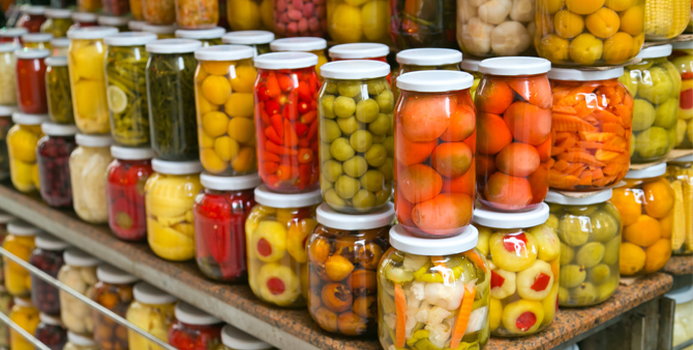Fruits and vegetables are an essential component to a healthy diet. They provide many necessary vitamins and minerals, fiber, and other substances that are important for good health. Most fruits and vegetables are also naturally low in calories and filling, making them an essential part of every meal. While fresh vegetables have long been held as the superior variety, research has begun to show that the nutritional difference between fresh and canned fruits and vegetables are not all that different.
Fresh Fruits and Vegetables
Fresh fruits and vegetables that are destined to be shipped to fresh-produce sections around the country are typically picked before they reach their peak ripeness. While this gives them time to get to the consumers kitchen before ripening fully, it also gives them less time to develop a full spectrum of vitamins and minerals. Additionally, as soon as produce is picked, it naturally starts to decay. Each vitamin and mineral possesses their own sensitivities to different storage and processing environments, however as a general rule, fresh fruits and vegetables will lose nutrients up until they are eaten. Accordingly, fresh, local produce, eaten soon after harvest, and properly stored at cool temperatures between harvest and consumption are ideal for maximum nutrient content.
One of the biggest pros to eating fresh produce is that it is completely natural. There are no added sugars, no preservatives and no hidden salts. A fresh apple is a fresh apple. In addition, most fresh produce packs significantly greater amounts of fiber than canned or frozen varieties, keeping you full and providing many other digestive health benefits.
Canned Fruits and Vegetables
While the taste and texture of canned produce may not compare to its fresh counterparts, they will actually still provide many of the same nutrients and minerals. Produce destined to be canned is processed immediately after harvesting, minimizing the time for initial nutrient losses. The heating process during canning can destroy anywhere from one-third to one-half of certain vitamins and minerals. However, once canned, additional losses of these sensitive vitamins are significantly less. Therefore, produce handled properly and canned promptly after harvest can be just as nutritious as fresh produce that has been held many days after harvest.
When stocking up on canned produce, watch for sodium and added sugar. Often times, sodium is added to canned goods to help preserve them. Look for low-sodium, reduced-sodium or no-salt-added labeled cans. Additionally, you can drain and rinse canned veggies to reduce the sodium content even more. For fruits, opt for those canned in water over juices or syrups, as these have significantly higher amounts of added sugar.
Much research has pointed to the fact that many Americans are not meeting their daily recommended intake for fruits and vegetables. Canned items may be a convenient way to keep fruits and vegetables stocked in your pantry for the times that you can't get to the store. Additionally, since they are non-perishable, you won't waste money by having to throw them away when they go bad, which sometimes can happen with fresh produce. The bottom line in this debate still remains that it is crucial to consume a variety of daily fruits and vegetables. Whether this is achieved through canned varieties or fresh is of secondary importance to making sure you meet your fruit and vegetable intake each and every day.
Sarah Dreifke is a freelance writer based in DeKalb, IL with a passion for nutrition education and the prevention of chronic disease. She holds a Bachelor of Science in both Dietetics and Life Sciences Communication from the University of Wisconsin-Madison. Currently, she is working towards a combined Master's Degree in Nutrition and Dietetics as well as a dietetic internship at Northern Illinois University.




